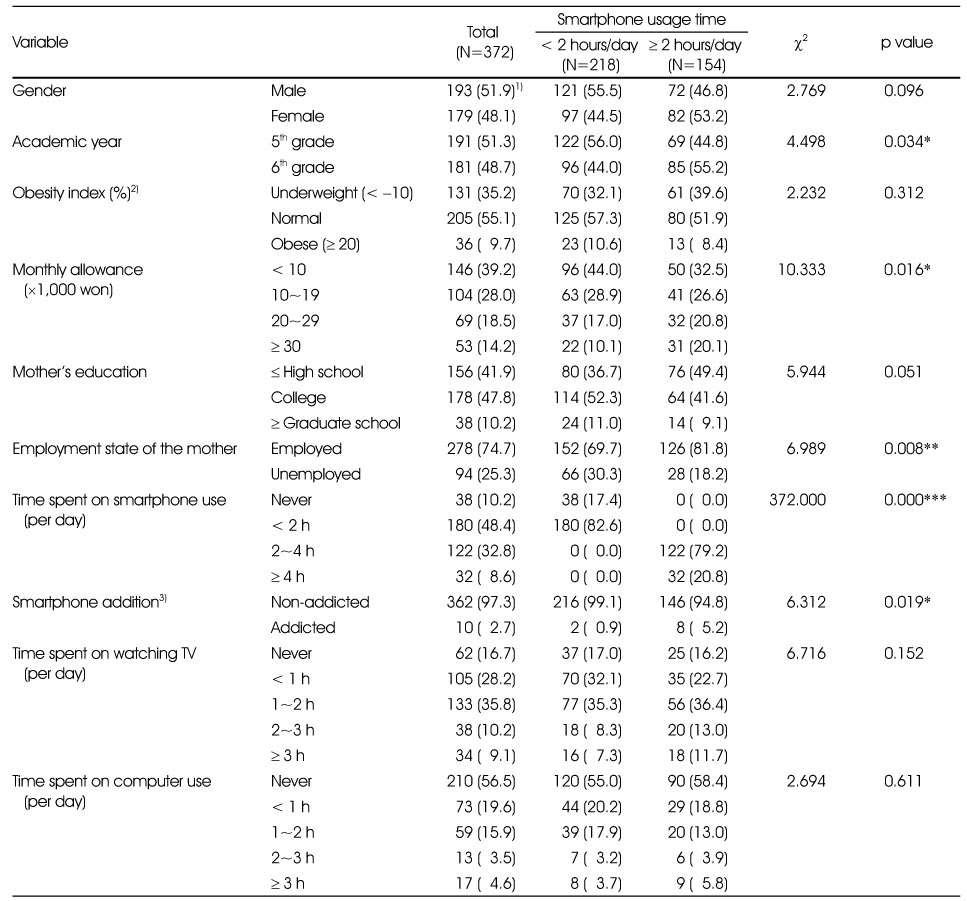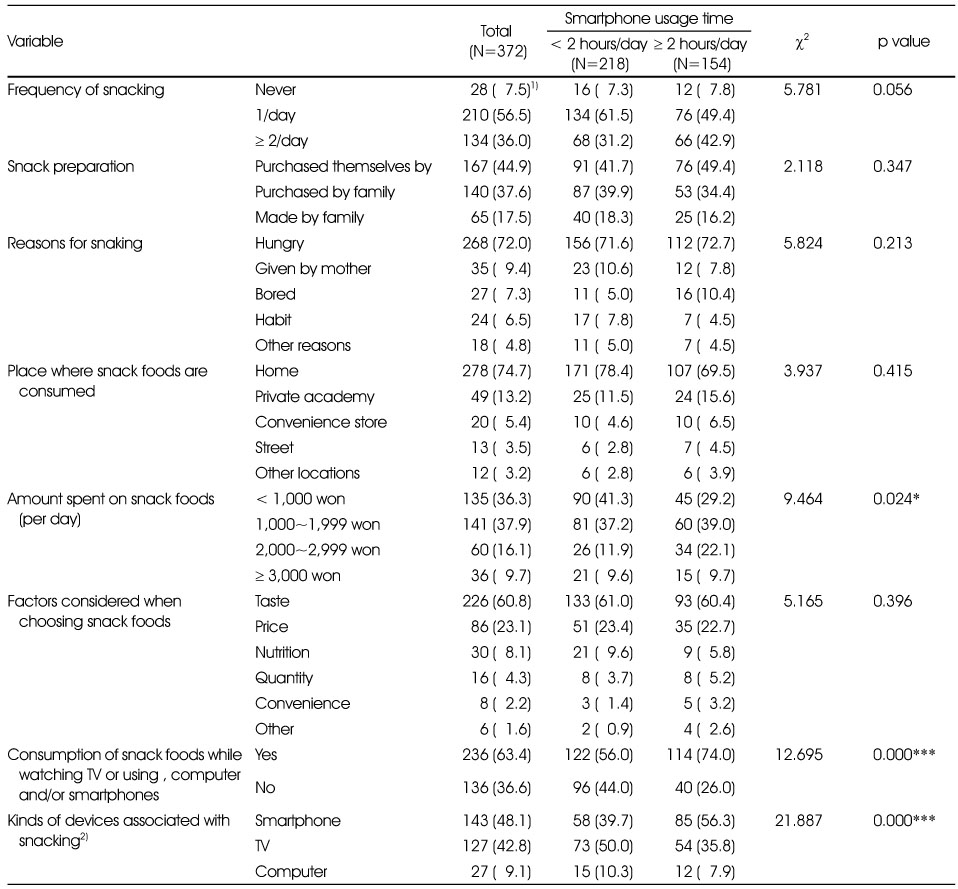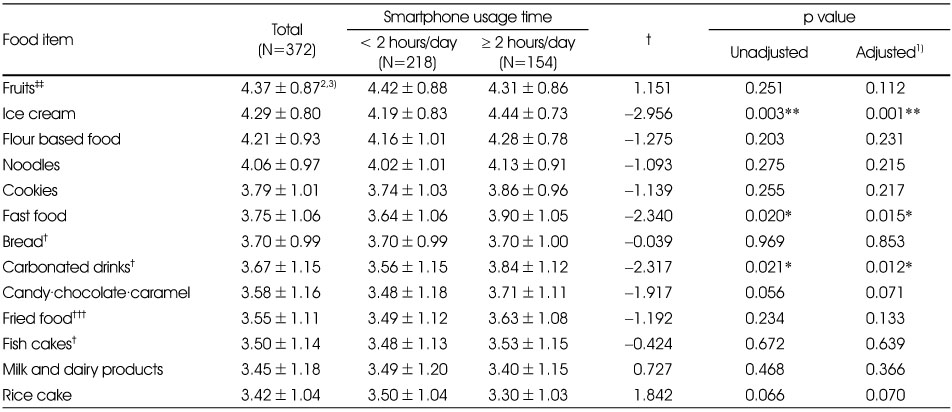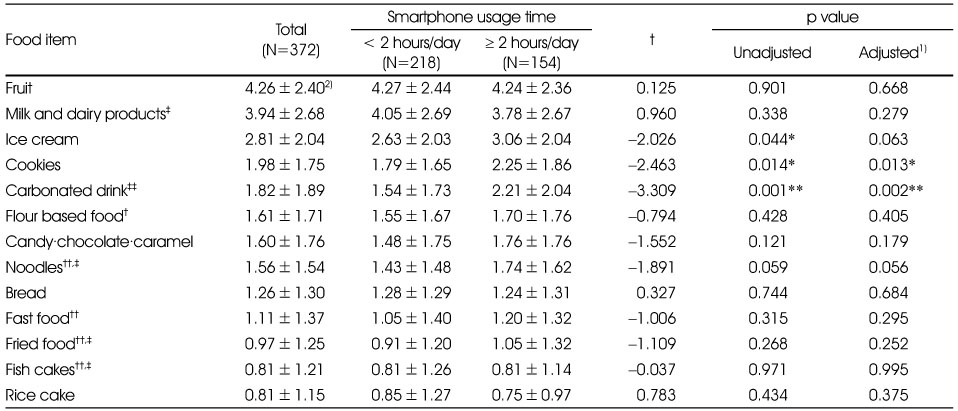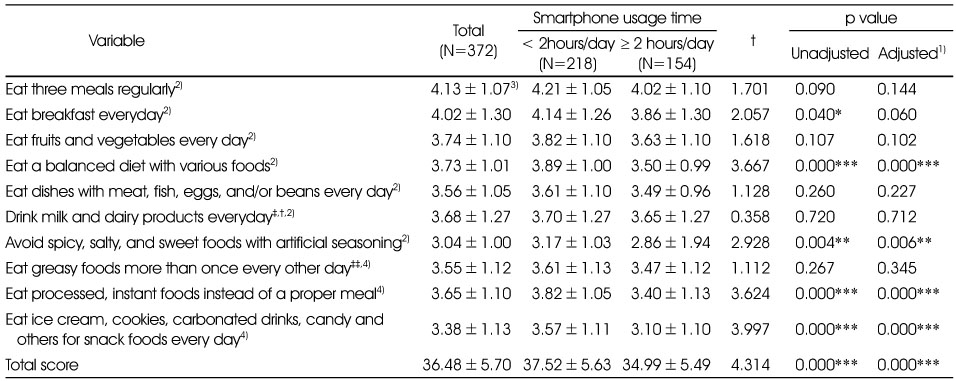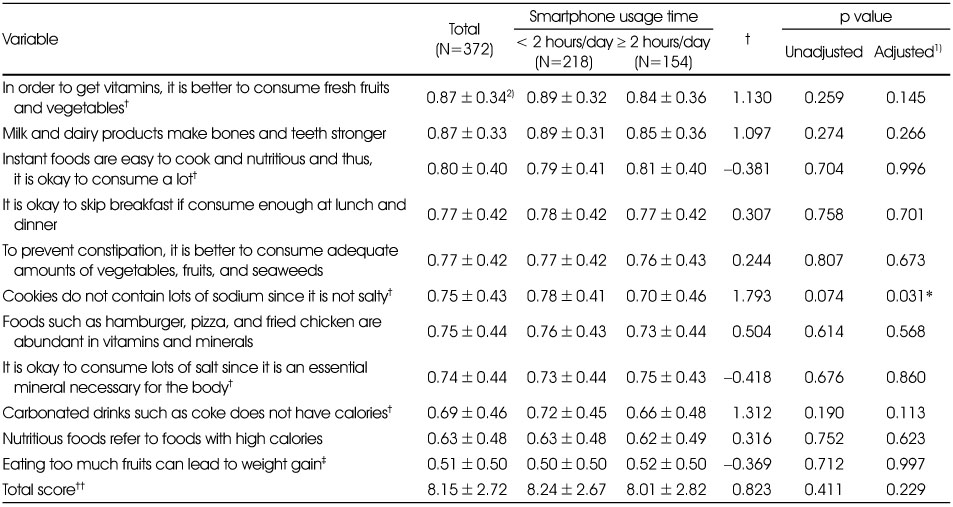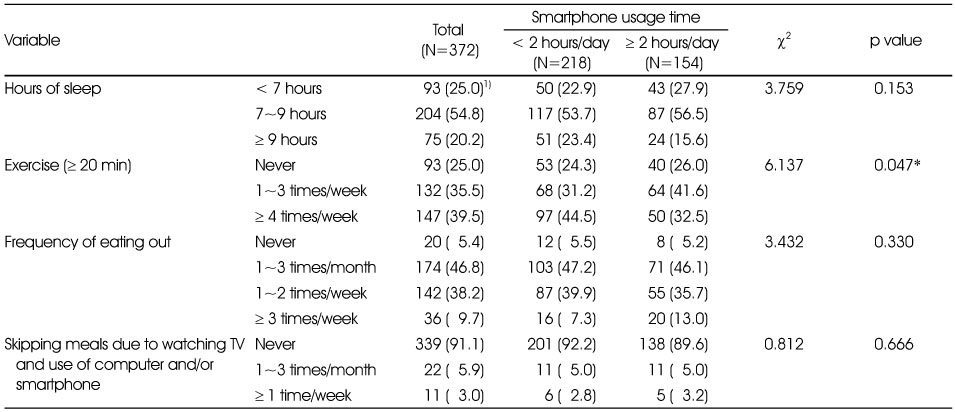Lifestyle, Dietary Behavior and Snack Preference of Upper-grade Elementary School Students in Cheongju according to the Usage Time of Smartphones
Article information
Abstract
Objectives
This study was conducted to examine the length of exposure to smartphone and its association with dietary behavior toward snacks, lifestyle, and nutrition knowledge in elementary school students.
Methods
Subjects were 372 5th and 6th grade schoolchildren in Cheongju, Korea, and data was collected by a self-administered questionnaire. They were divided into two groups by the time spent using smartphone: moderate (< 2 hours/day) and overexposure (≥ 2 hours/day). Data was analyzed using frequency analysis, χ2-test, and independent t-test as well as analysis of covariance when necessary.
Results
Approximately half of subjects (41.4%) reported spending ≥ 2 hours/day using smartphone. That habit was more frequent among students in the 6th grade, those who received more monthly allowance, and who has a working mother. 63.4% of the subjects reported that they consumed snacks while watching television, using a computer and/or a smartphone and 48.1% said that they consumed snacks while they use a smartphone. Both situations were most prevalent among those with overexposure to smartphone (≥ 2 hours/day). We also observed that a higher percentage of subjects from the overexposure group spent more money on snack foods with the preference for ice cream, fast food, and carbonated drinks. Further, those in the overexposure group consumed more ice cream, cookies, and carbonated drinks. In addition, they had less desirable dietary behavior and health-related lifestyle (sleep duration and frequency of regular exercise) compared to those with moderate smartphone usage (< 2 hours/day). However, there was no statistical difference in nutrition knowledge among children with different degrees of smartphone usage.
Conclusions
Our results showed that longer smartphone use was associated with less desirable snack preference/consumption and other dietary behavior in elementary school students. Thus interest and positive attitudes towards healthy snacks and diet should be reinforced in nutrition education programs, especially for those who are prone to use smartphones.
Acknowledgments
This work was supported by the intramural research grant of Chungbuk National University in 2015

